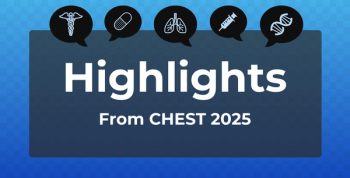
Optimizing ALL Treatment Through Guideline Adherence and Highly-Effective Therapies
Key Takeaways
- Asparaginase-containing pediatric-inspired regimens (PIRs) are underutilized in adolescents and young adults with acute lymphoblastic leukemia (ALL), despite reducing inpatient days and treatment costs compared to other regimens.
- Brexucabtagene autoleucel (brexu-cel) therapy in relapsed/refractory B-cell ALL reduces post-infusion hospitalization and costs, highlighting its impact on health care resource utilization.
Guideline adherence in treating acute lymphoblastic leukemia (ALL) enhances health care resource utilization, especially for adolescent and young adult patients.
Adhering to guideline-recommended best practices and proven highly effective therapies reduces health care resource utilization (HCRU), according to 2 abstracts on acute lymphoblastic leukemia (ALL) treatment that were presented at AMCP Nexus, held October 27-30 in National Harbor, Maryland.
Discrepancies in adherence to guideline-recommended therapy for adolescent and young adult (AYA) patients with newly diagnosed acute lymphoblastic leukemia (ALL) directly translate into variances in health care resource utilization (HCRU) and costs, according to recent real-world data.1
Despite their proven survival benefits, asparaginase (ASP)-containing pediatric-inspired regimens (PIRs) are received by less than 30% of AYA patients, yet those who do receive them experience fewer per-patient per-month (PPPM) inpatient days and lower all-cause treatment costs compared with patients on other regimens.
This contrasts with the highly effective, yet complex, treatment landscape for relapsed/refractory (R/R) B-cell ALL (B-ALL), where a systematic review suggests that brexucabtagene autoleucel (brexu-cel), a CD19-directed chimeric antigen receptor (CAR) T-cell therapy, is associated with a notable reduction in post-infusion hospitalization and intensive care unit use, as well as lower post-infusion costs compared with patients who did not receive CAR T.2 These findings underscore the critical impact of treatment choice on HCRU and financial burden across the ALL treatment continuum, from initial diagnosis in AYAs to advanced salvage therapy.
ASP-Containing PIRs in AYA ALL: Underutilization and Economic Benefits
The treatment landscape for ALL has undergone significant evolution, with newer therapies and protocol updates emerging over the past decade. PIRs that incorporate ASP have been shown to improve survival and decrease relapse rates compared with conventional cytotoxic regimens like hyper-CVAD (cyclophosphamide, vincristine sulfate, doxorubicin hydrochloride [Adriamycin], and dexamethasone).
However, this study examining treatment patterns, HCRU, and costs for AYA patients (aged 15-39 years) with newly diagnosed ALL in the US found that less than 30% of patients received ASP regimens despite guideline recommendations and the survival benefits observed in this population.1
This retrospective descriptive analysis utilized the Optum deidentified Market Clarity claims and electronic health records database from July 2018 to December 2023. A total of 157 patients were included who received various regimens: ASP (n = 43), hyper-CVAD (n = 29), nelarabine (n = 8), regimens without core components of a PIR (non-PIR, n = 55), or other regimens (n = 22). Patient characteristics across these groups were generally similar, with an overall median age of 19 years and 66% male, except for the age and sex of patients treated with hyper-CVAD.
The median time from diagnosis to treatment initiation varied slightly among the groups, with the overall median time being 22 days (IQR 10-34 days). More than 90% of patients were admitted to the emergency department and/or experienced at least 1 inpatient stay during the follow-up period, which had a mean duration of approximately 2 years.
HCRU and Cost Differences
The analysis identified significant variation in HCRU and costs among the treatment cohorts. ASP-treated patients demonstrated fewer PPPM inpatient days (mean [SD], 2.9 [3.4]) compared with the other 3 main cohorts: hyper-CVAD (4.0 [3.9]), nelarabine (3.7 [3.7]), and non-PIR regimens (5.4 [7.3]).
Furthermore, the PPPM total all-cause costs were lowest with ASP regimens ($44,381 [$28,456]) and highest with nelarabine ($86,270 [$67,338]). This observation of lower all-cause treatment costs and fewer hospital days with ASP-treated patients provides further support for the adoption of PIR regimens in AYA patients with ALL. Notably, PPPM pharmacy costs were higher with ASP ($1940 [$5073]) and nelarabine ($1928 [$4141]) compared with hyper-CVAD ($1506 [$2623]) and non-PIR regimens ($1426 [$2824]). Despite the higher pharmacy costs, the overall all-cause costs were lower for the ASP regimens, driven by the observed reduction in inpatient utilization.
“[The] analysis also suggests ASP-treated [patients] have lower all-cause [treatment] costs and fewer days in the hospital compared to other [treatments], supporting adoption of PIR regimens in AYA pts,” the researchers concluded in their abstract.
Brexucabtagene Autoleucel's Impact on R/R B-ALL and MCL
For adults with relapsed/refractory (R/R) B-ALL or mantle cell lymphoma (MCL), brexu-cel is an approved and highly effective treatment. The researchers conducted a systematic literature review to better understand the evidence on HCRU, costs, and health-related quality of life (HRQOL) associated with brexu-cel in R/R B-ALL and R/R MCL. The review included 31 publications on HCRU and/or costs from 19 unique real-world cohorts and 5 HRQOL publications from 2 clinical trials: ZUMA-2 (R/R MCL) and ZUMA-3 (R/R B-ALL).
The review found that brexu-cel treatment was associated with a notable reduction in post-infusion hospitalization and ICU use compared with non–CAR T patients. In the analyzed studies, hospital length of stay (LOS) ranged from 15 to 22 days, although LOS was generally longer for patients with MCL. ICU admission rates for B-ALL ranged from 0% to 20% and 11% to 34% for MCL.
Regarding costs, the review found that brexu-cel was associated with lower post-infusion costs compared to non–CAR T patients. One of the studies reported that the post-infusion PPPM costs for the US MCL cohort were $9096 (Medicare) and $4822 (commercial), which were 24% and 70% lower than those for non–CAR T patients, respectively.
Improvements in Health-Related Quality of Life
HRQOL was assessed using the EuroQol 5 Dimension 5 Level (EQ-5D-5L)/EQ-5D visual analogue scale in ZUMA-2 and ZUMA-3, which showed that HRQoL improved over time. Patients experienced a brief decline in HRQOL post-infusion (month 1), followed by a recovery to baseline or improvement beginning in month 3 for the EQ-5D-5L functional domains mobility, self-care, and usual activity. For the symptom domains anxiety/depression and pain/discomfort, the trends suggested stability over the same period.
“More [real-world evidence] is needed to evaluate HRQOL, capture a broader range of HCRU and cost outcomes, and support future value assessments of brexu-cel in clinical and policy decision-making,” the researchers concluded.
References
1. Nguyen A, Burgess E, Sillah A, et al. Treatment patterns, health care resource utilization (HCRU), and costs in adolescent and young adult (AYA) patients (pts) with acute lymphoblastic leukemia (ALL). Presented at: AMCP Nexus; October 27-30, 2025; National Harbor, Maryland. Abstract 225.
2. Shah B, Iloabuchi C, Harrigan S, et al. Systematic literature review of health care resource use (HCRU), costs and health-related quality of life (HRQoL) for brexucabtagene autoleucel in relapsed/refractory (R/R) mantle cell lymphoma (MCL) and precursor B-cell lymphoblastic leukemia (B-ALL). Presented at: AMCP Nexus; October 27-30, 2025; National Harbor, Maryland. Abstract 309.
Newsletter
Stay ahead of policy, cost, and value—subscribe to AJMC for expert insights at the intersection of clinical care and health economics.













































